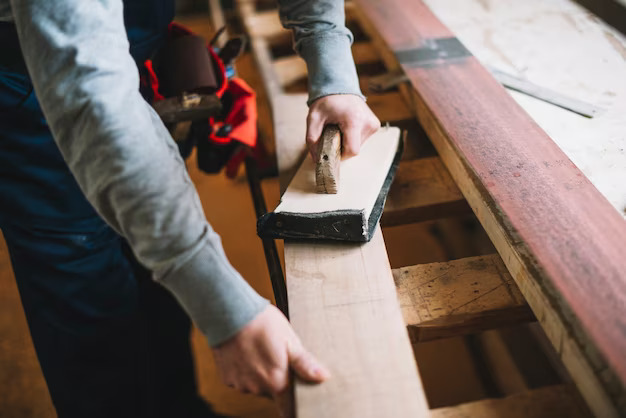Hardwood Flooring Restoration [2/3]
Resurfacing: Removing The Top Layers
The purpose of refinishing hardwood flooring is to bring new life to your floors. A good hardwood floor restoration will leave your floors often looking as good as new. The concept is simple; remove the top layer of the wood to reveal a fresh, new surface, apply a sealant and possibly stain to the surface to protect it.
Professional flooring restoration is done with using powerful sanders. Rooms are often taped off in preparation for the excess of dust. Professionals will sand the hardwood floor only so much that the next layer of wood is exposed. This allows you the opportunity to resurface your flooring in the future again.
There are different levels of sanding that you can perform depending on how much wear your floor has taken over time. If you’re looking for a quick fix, light sanding will do just fine; however, if your floors are in bad shape or need more serious attention, heavy-duty stripping may be required before any refinishing takes place.
Professionals with experience know how to sand without leaving marks in your wood floor that will show up after your finish. They may also use chemical strippers and heat guns to remove old finishes and expose your wood’s natural color. This requires skill and proper ventilation to say the least.
Prep For Stain & Sealer
Next, your flooring needs to be prepped for refinishing. In some cases, cleaning up after removing the top layer of your hardwood floor may be as simple as vacuuming up sawdust or wiping up a few spills. However, it is important to have a completely clean surface so professionals may use mineral spirits or other products & tools to carefully clean the surface of flooring. This will help ensure an even application of sealand and/or stain.

Stain & Sealant
Once your flooring is clean and dry, they will receive multiple coats of sealant to protect them from future damage. Sealant provides a physical barrier on the surface of your otherwise porous wood. Sealant will help keep your floors looking new for longer and can even prevent water damage if applied correctly. There are many types of sealants that can be used to protect the wood in your home, including polyurethane and lacquer. The type of sealant that’s best for your hardwood flooring depends on the wood and usage.
Applying sealant and stain is not always a straightforward process. It is important to apply smooth, even coats. Too much stain in one area will show as an uneven discoloration in the final product.
Sealants are extremely valuable for your flooring. Aside from protecting your wood flooring against the physical damage of scuffing, scratching, or wear, sealants also provide UV protection. This is especially important because UV light through your windows can easily change the color of your flooring quickly.
